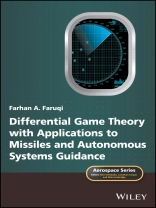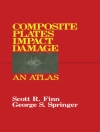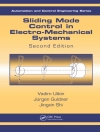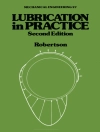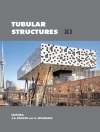Differential Game Theory with Applications to Missiles and Autonomous Systems explains the use of differential game theory in autonomous guidance and control systems.
The book begins with an introduction to the basic principles before considering optimum control and game theory. Two-party and multi-party game theory and guidance are then covered and, finally, the theory is demonstrated through simulation examples and models and the simulation results are discussed. Recent developments in the area of guidance and autonomous systems are also presented.
Key features:
* Presents new developments and how they relate to established control systems knowledge.
* Demonstrates the theory through simulation examples and models.
* Covers two-party and multi-party game theory and guidance.
* Accompanied by a website hosting MATLAB® code.
The book is essential reading for researchers and practitioners in the aerospace and defence industries as well as graduate students in aerospace engineering.
สารบัญ
Preface xi
Acknowledgments xiii
About the Companion Website xv
1. Differential Game Theory and Applications to Missile Guidance 1
Nomenclature 1
Abbreviations 2
1.1 Introduction 2
1.2 Game Theoretic Concepts and Definitions 3
1.3 Game Theory Problem Examples 4
1.4 Game Theory Concepts Generalized 8
1.5 Differential Game Theory Application to Missile Guidance 10
1.6 Two-Party and Three-Party Pursuit-Evasion Game 11
1.7 Book Chapter Summaries 11
References 14
2. Optimum Control and Differential Game Theory 16
Nomenclature 16
Abbreviations 17
2.1 Introduction 17
2.2 Calculus of Optima (Minimum or Maximum) for a Function 18
2.3 Dynamic Optimum Control Problem 23
2.4 Optimal Control for a Linear Dynamical System 38
2.5 Optimal Control Applications in Differential Game Theory 40
2.6 Extension of the Differential Game Theory to Multi-Party Engagement 50
2.7 Summary and Conclusions 50
References 51
Appendix 53
3. Differential Game Theory Applied to Two-Party Missile Guidance Problem 63
Nomenclature 63
Abbreviations 64
3.1 Introduction 64
3.2 Development of the Engagement Kinematics Model 67
3.3 Optimum Interceptor/Target Guidance for a Two-Party Game 70
3.4 Solution of the Riccati Differential Equations 75
3.5 Extension of the Game Theory to Optimum Guidance 79
3.6 Relationship with the Proportional Navigation (PN) and the Augmented PN Guidance 81
3.7 Conclusions 82
References 82
Appendix 84
4. Three-Party Differential Game Theory Applied to Missile Guidance Problem 102
Nomenclature 102
Abbreviations 103
4.1 Introduction 103
4.2 Engagement Kinematics Model 104
4.3 Three-Party Differential Game Problem and Solution 107
4.4 Solution of the Riccati Differential Equations 111
4.5 Discussion and Conclusions 116
References 117
Appendix 118
5. Four Degrees-of-Freedom (DOF) Simulation Model for Missile Guidance and Control Systems 125
Nomenclature 125
Abbreviations 126
5.1 Introduction 126
5.2 Development of the Engagement Kinematics Model 126
5.3 Vehicle Navigation Model 130
5.4 Vehicle Body Angles and Flight Path Angles 133
5.5 Vehicle Autopilot Dynamics 135
5.6 Aerodynamic Considerations 135
5.7 Conventional Guidance Laws 136
5.8 Overall State Space Model 138
5.9 Conclusions 138
References 139
Appendix 140
6. Three-Party Differential Game Missile Guidance Simulation Study 150
Nomenclature 150
Abbreviations 150
6.1 Introduction 151
6.2 Engagement Kinematics Model 151
6.3 Game Theory Problem and the Solution 154
6.4 Discussion of the Simulation Results 157
6.5 Conclusions 162
References 163
Appendix 164
Addendum 165
Index 189
เกี่ยวกับผู้แต่ง
Farhan A. Faruqi, Defence Science and Technology Organisation, Australia
Professor Dr. Farhan A. Faruqi is the Head of the Intelligent Autonomous Systems Research Guidance and Control Group in the Defence Science and Technology Organisation in Australia. He is also an Adjunct Professor at the University of South Australia. His main areas of expertise include autonomous systems navigation; guidance and control; target tracking; and intelligent autonomous systems. He has more than twenty years’ experience in the Aerospace and Defence Industry in the UK, USA, and Australia.
